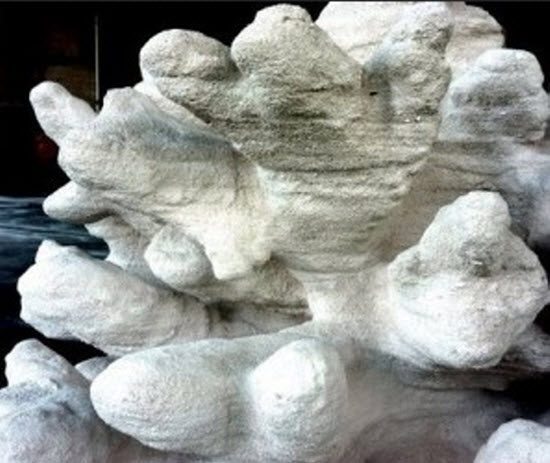
3D printing set to revolutionize artificial reefs
Making reef structures from cement has long been used as a technique to try to restore or create new reefs. The cement reefs do work but are associated with several different problems. One of them is that cement isn’t pH neutral and that coral larvae therefore do not settle on them in the amounts that is desired. Another method used to create fake reef is to use metal structures with a low electric current running through them. This quickly calcifies the tubes and promote coral growth. This method can however be expensive and requires access to electricity. This can be hard to provide in areas where solar cells are likely to be stolen by local fishermen..
SOI, 3D program specialist James Gardiner and Reef Arabia is now pioneering a new method of creating artificial reefs that might turn out to be a better alternative. Using a 3D printer to print reefs. They have developed a 3d printer than can print out reefs in a sand stone material. They have allready made and submersed two reefs. There are many benefits with this process says the forum group.
- The sand stone is pH neutral.
- It is possible to print any form with ease. This allows for more vertical surfaces where coral larvae like to attach themselves.
- A lot more complex designs are possible. 3D printing can easily create caves, crevices and other complex forms that would not be possible to do in cement.
- It is easy to use different designs which allows to create a lot more complex reefs (using different designed pieces). A more complex reef will offer suitable living space for more species.
- Sand stone has a smaller eco footprint than concrete as a lot less co2 is released in process.
- 3D printing can allow for more rapid production of artificial reef. At this point it takes 1 day to print one 5m reef unit and 4 of those can be printed simultaneous. A complex reef structure take about 1 week to design in the computer
It is still not certain that this technique will prove to be quicker and more cost efficient than currently used methods of creating reefs but Reef Arabia remain optimistic and it seems likely that prices will keep going down as 3D printing evolves. Even if ends up being a slightly more expensive method it might still be worth using since it allows for more complex and more natural artificial reefs.